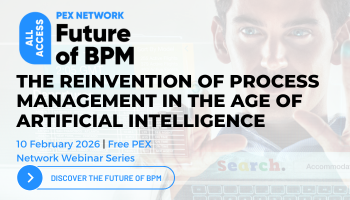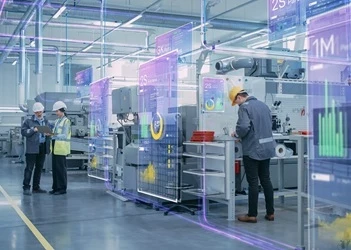US builds digital twins for nuclear reactors to enhance safety & efficiency
Technology leverages advanced computer models and AI to predict reactor behavior, aiding operators in making real-time decisions
Add bookmark
Scientists at the US Department of Energy’s (DOE) Argonne National Laboratory have developed highly advanced digital twins for nuclear reactors to enhance safety and efficiency.
The technology leverages advanced computer models and artificial intelligence (AI) to predict reactor behavior, aiding operators in making real-time decisions.
It marks a significant advancement in understanding and managing advanced nuclear reactors, enabling rapid and accurate predictions and responses to changes in reactor conditions.
Join the PEX Network community

Don't miss any news, updates or insider tips from PEX Network by getting them delivered to your inbox. Sign up to our newsletter and join our community of experts.
Learn MoreScientist build digital twins for nuclear reactors
Researchers at Argonne National Laboratory have developed digital twins for two types of nuclear reactors using an advanced methodology. These include the now-decommissioned Experimental Breeder Reactor II (EBR-II) and a conceptual design known as the generic Fluoride-salt-cooled High-temperature Reactor (gFHR).
According to a press release, the EBR-II digital twin served as a benchmark to validate their simulation models.
At the heart of this digital twin technology are graph neural networks (GNNs) – a form of AI designed to handle data structured as graphs, where elements and their relationships are interconnected. GNNs are particularly effective at identifying complex patterns and interdependencies, making them ideal for modeling systems where relationships between components are critical.
By preserving the physical configuration of reactor systems and incorporating the fundamental laws of physics, GNN-based digital twins offer highly accurate and reliable virtual representations of real-world systems.
To train the GNNs and perform uncertainty quantification – an essential step for identifying and mitigating potential inaccuracies in predictive models – the team utilized the Argonne Leadership Computing Facility (ALCF), a user facility supported by the DOE Office of Science.
GNN-powered digital twins significantly accelerate predictive analyses
Compared to traditional simulations, GNN-powered digital twins can significantly accelerate predictive analyses. They quickly forecast reactor behavior under different scenarios, such as shifts in power output or changes in cooling system performance. This capability stems from training the models on data generated by Argonne’s System Analysis Module (SAM), a tool used for evaluating advanced nuclear reactor designs.
Once trained, the models can deliver accurate predictions even when working with limited real-time sensor data – enhancing decision-making, improving planning and reducing both maintenance and operational costs.
These digital twins also enable real-time monitoring of reactor systems, allowing for early detection of anomalies. When irregularities occur, the system can recommend corrective actions to maintain safety and operational continuity.
Argonne’s GNN-based digital twin technology offers a range of advantages over conventional methods, including greater predictive accuracy and a deeper understanding of system-wide interactions. Its potential applications span emergency response planning, informed operational decisions, and even the eventual automation of reactor management.
This innovation marks a major advancement in the development and deployment of advanced nuclear reactors, helping ensure they run more safely, efficiently and cost-effectively, while also extending the life of key components, the scientists stated.
All Access: Future of BPM 2026

You asked, and we listened. Business process management (BPM) remains the cornerstone technology for driving organizational transformation, according to the survey results featured in the latest PEX Report. As we look toward 2026 and beyond, generative AI, agentic AI, and intelligent process orchestration are redefining how processes are designed, executed, and optimized. BPM is your key to adapting swiftly and effectively in this new era.
PEX Network is bringing together industry leaders, technology innovators, and thought leaders to answer your biggest questions and explore the advancements reshaping business today. And you're invited. Register for free to save your spot now!
Register Now












